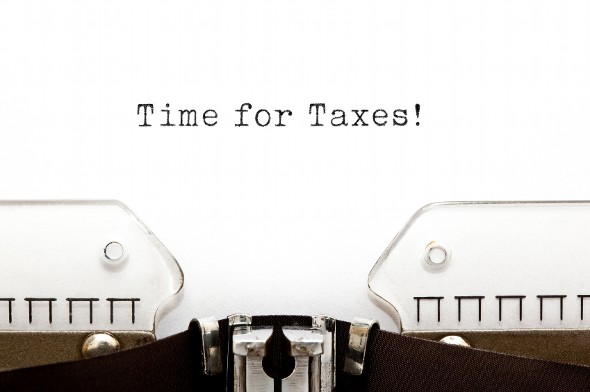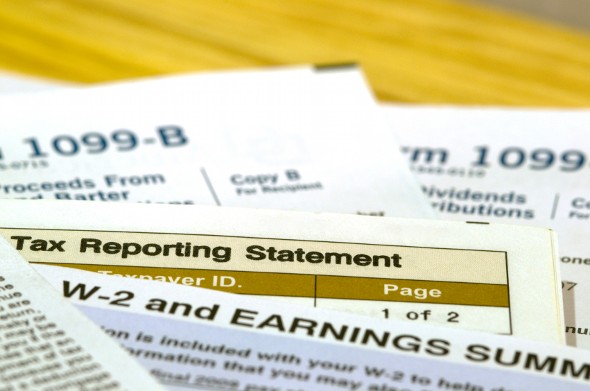The first thing you should know about the different types of 1099 forms is that if you’re a worker, you don’t need to fill them out yourself. Instead, the entity who is administering your investment account will send you a 1099. It’s a relatively simple form to understand, meaning that incorporating one into your tax return process shouldn’t be too difficult. You can expect to receive all 1099s that apply to you by early February. And a financial advisor can help you take an additional step to figure out how 1099 taxes fit into your overall financial goals.
Your financial plan isn’t complete until you account for annual income tax payments and refunds. Talk to a financial advisor.
What Is the 1099 Form?
The 1099 is a type of IRS tax form that is commonly used to report different types of income that taxpayers receive annually from organizations, financial institutions, and other non-employment-related sources.
This income can come from stock dividends, lawsuit and divorce settlements, lottery winnings and other prizes or awards, real estate sales, and inheritance, as well as compensation for freelance or independent contract work.
Taxpayers have to report this outside income to avoid getting audited.
What Is the 1099 Form Used For?
According to the IRS, these forms can apply to a number of financial sources. These include royalties, rent payments, services performed by non-employees, prizes, awards, healthcare payments, insurance proceeds, attorney payments, periodic interest payments, investment returns, unemployment benefits, retirement account withdrawals, and debt cancelled by a creditor.
Who Gets a 1099 Form?
Individual taxpayers usually don’t file 1099 forms, but they can get them electronically or via mail at the beginning of each year from non-employment income sources like a brokerage, creditor, or bank.
If you are a freelancer or an independent contract worker, your client can issue you a 1099-MISC form. Employees, by comparison, get W-2 forms. But if you earned less than $600, you may not get the 1099-MISC form.
Common Types of 1099 Forms
The type of 1099 form that you will use will depend on the type of income that you received. Here are seven common types of 1099 forms below.
Form 1099-MISC
Form 1099-MISC is for miscellaneous income. This could be from work you did as a freelancer, independent contractor or intern. Regular salaried and hourly workers will have their income reported on W-2 forms. Anyone who paid an independent contractor, though, will report that person’s wages on a 1099-MISC. If you earned wages as an independent contractor in a certain tax year, make sure that the person or people who hired you have your correct address and information on file.
Form 1099-INT
You may receive a 1099-INT from your bank to report money that you earned in periodic interest payments. For example, if you have a savings account your bank should send you a 1099-INT to report the interest you earned that year. Although it’s likely a small amount, this interest is taxable, so remember to enter what’s on your 1099-INT when you do your income taxes.
Form 1099 – DIV

If your investments earned dividends (and we hope they did!) you should get a 1099-DIV from your brokerage reporting those dividends. When you file your taxes you’ll include those dividends. This is different from capital gains and losses made from selling assets. You’ll report those separately.
Form 1099-G
The “G” in 1099-G stands for “government.” Your state government will send you a 1099-G to report money you received in unemployment benefits or in a state tax refund, if applicable. Unemployment benefits are subject to taxation at the federal level and must be reported on your income tax returns. If you claimed a deduction for your state income taxes on your federal income taxes the previous year, you must report the state tax refund form your 1099-G as income.
Form 1099-R
Form 1099-R is for withdrawals from a retirement account such as a traditional IRA. The brokerage that houses your retirement account will send you a 1099-R detailing the withdrawals you took from the account throughout the tax year. Got money from a pension plan, profit-sharing plan or annuity? That’ll be on a 1099-R as well.
Form 1099-B
Income received from brokerage transactions and barter exchanges will be reported on a 1099-B form. It itemizes all the transactions made during the tax year, and individual taxpayers use that information to calculate their gains and losses on Form 8949. The sum total will be reported on Schedule D of your tax return. This will be your taxable gain or loss for the year.
Form 1099-C
If a creditor has canceled a portion of your debt you should receive a 1099-C. If you reach a debt settlement with, say, your credit card company, they’ll send you a 1099-C to include with your tax returns for that year. Unfortunately, the downside of having that debt canceled is that your taxable income may increase by the amount of the canceled debt.
Bottom Line

If you expect to get a lot of income from freelance work, stock dividends, awards, retirement accounts, and other 1099 sources, you should consider making estimated tax payments throughout the year. These payments are made towards the estimated tax amount that you will have to pay on income that hasn’t been subject to withholding. Keep in mind that if you fall behind on tax payments, you can face penalties, interests, and a large tax bill at the end of the year.
You should receive your 1099 forms by early February, which should give you plenty of time to complete your taxes for the deadline, which, in 2023 is April 18. If you’re concerned that you might not get your form on time, get in touch with your employer and/or bank beginning in early January. If you use tax preparation software like TaxAct or H&R Block, you’ll be prompted to enter the information on any and all 1099 forms as you complete your returns.
Because taxes are not withheld from 1099 income, it’s important to keep track of all your reported incomes. A financial advisor can help you figure out how 1099 taxes fit into your overall financial goals, and apply what your tax accountant does to a long-term financial plan.
Tax Planning Tips
- Finding a financial advisor doesn’t have to be hard. SmartAsset’s free tool matches you with up to three vetted financial advisors who serve your area, and you can interview your advisor matches at no cost to decide which one is right for you. If you’re ready to find an advisor who can help you achieve your financial goals, get started now.
- A financial advisor who specializes in tax planning can help lower your 1099 income taxes by harvesting your losses. This means that you will be able to use your investment losses to reduce taxes on 1099 income.
- Figuring out your taxes can be overwhelming. SmartAsset’s income tax calculators will help you calculate federal, state, and local taxes.
Photo credit: © iStock/HQPhotos, © iStock/IvelinRadkov, © iStock/vgajic
